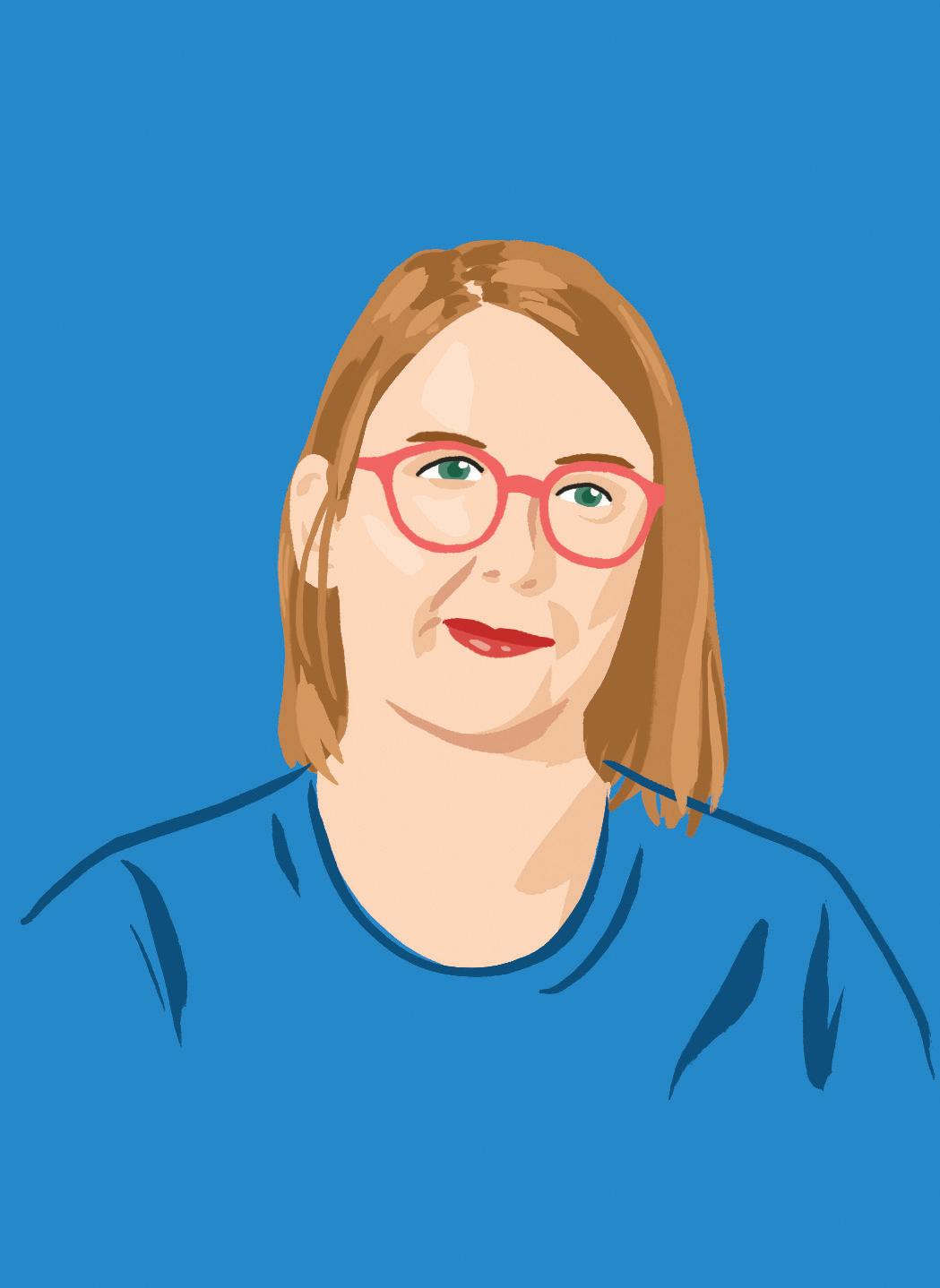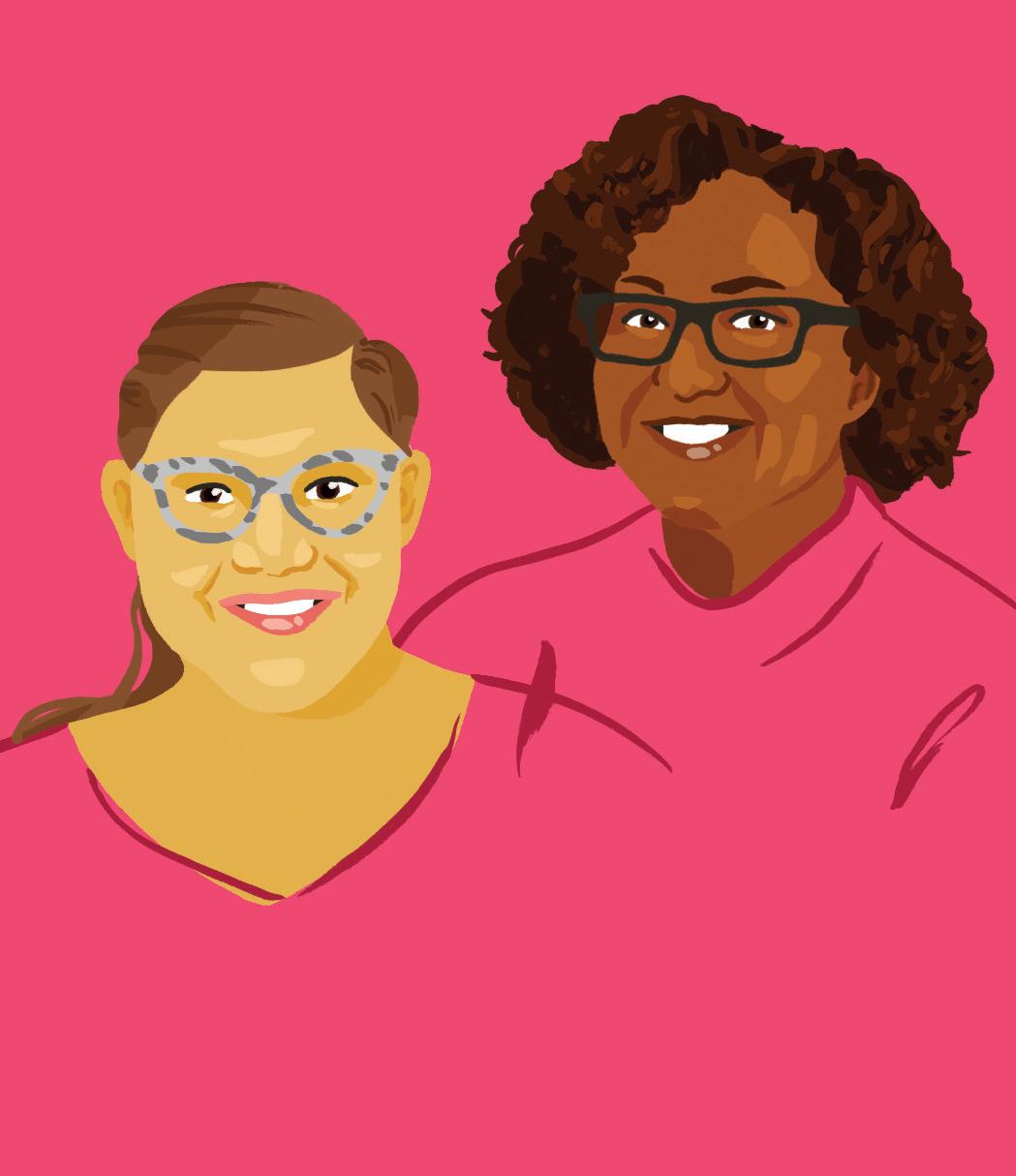
8 minute read
Participatory Grantmaking Is Your Future
from Centering Disability
by SSIR
The foundation’s awakening on disability was so meaningful because Ford is one of the world’s largest foundations. If the foundation could acknowledge its errors and take on the long work of change, would the rest of the sector follow?
“Darren Walker was willing to learn in public and that sends a signal,” Trautmann says. “In philanthropy we think we can only have influence through our grants. But setting the agenda, asking questions, educating people, and making connections is also a major way to make a difference.”
Indeed, a large part of the Ford leadership team’s commitment was raising the topic with other foundation leaders. Walker asked Rich Besser, president and CEO of the Robert Wood Johnson Foundation, the largest health-care foundation in the United States, what his organization was doing to address disability justice. Initially, there wasn’t much to speak of, but Besser joined Walker on his quest to make changes, and together, they convened foundation presidents to form the Presidents’ Council on Disability Inclusion in Philanthropy.
“We can’t get anything done alone,” Walker says. “We all want to be able to tell our boards that we are doing something unique and special. But that model stands in the way of progress. I tell other presidents, ‘Join us, let’s do this together.’”
Launched in 2019, the council consists of 17 presidents of foundations, including The Heinz Endowments, the John D. and Catherine T. MacArthur Foundation, and Open Society Foundations, which are committed to increasing disability inclusion in their organizations and grantmaking. With the goal of influencing the wider sector, the council launched the Disability & Philanthropy Forum, a learning hub to guide funders on their journey to inclusion.
To help meet immediate needs, the council launched a $12 million Disability Inclusion Fund, which is housed at Borealis Philanthropy. The funds are beginning to be invested in the disability movement, supporting disability justice groups and fostering partnerships with other rights groups and philanthropy.
“When it comes to philanthropy, I don’t feel that there’s any better way to show that you value a group of people than to invest in them,” LaVant says.
Yet weaving disability inclusion into the fabric of philanthropy requires building a movement beyond a single fund. The council has challenged peer donors to commit to integrating a disability lens across their work through a disability inclusion pledge, a first for philanthropy. As of September 2021, the pledge had more than 50 signatories including the Bush Foundation, The Pittsburgh Foundation, and the Silicon Valley Community Foundation.
Some of the signatures were an easy sell, like Trautmann’s for FISA. Others took more convincing. Some have declined.
“There are people I’ve approached who haven’t signed,” Trautmann says. “There’s always competing priorities in our work, and it will take time for people to understand the imperative and opportunity here.”
For Callow, just the presence of the council is evidence of a turning tide.
“I am wildly hopeful that this organization can change that dynamic and really create better support for the grass roots,” she says.
Legorreta is already seeing greater representation for disability in the racial justice movement.
“I see organizations integrating racial equity and disability justice components in their messaging that never touched on disability,” she says. “There has been an awakening.” s
Funders must abandon top-down, one-sided funding approaches in favor of partnerships with the disability community.
BY NIKKI BROWN-BOOKER
For those of us who have participated in a half-century of powerful activism by people with disabilities, a familiar slogan summarizes our call to action: Nothing about us without us.
As a woman of color with a disability and the former executive director of a nonprofit organization serving people with disabilities, I have seen the disconnect between funder strategies and the needs of community-based nonprofits. Quite often, funding does not come with a cultural understanding of the disability community, and this ignorance can impede direct and efficient service. For instance, many organizations in the United States collect wheelchairs and send them to people with disabilities in areas of the world where there are no roads or sidewalks. Inexpensive equipment designed for a paved world barely lasts a few weeks on rough terrain. This altruistic strategy quite literally crumbles when put into practice.
A more effective strategy can be seen in the work of Whirlwind
Wheelchair International, an organization based in Berkeley,
California, that takes a community-based approach and honors the logistical needs of people with disabilities where they live. Whirlwind
Wheelchair brings its expertise into a community, determines what local materials are available, and teaches people to make their own wheelchairs. While addressing a need for dignified independence, the organization provides skills that translate into additional income.
If we want to serve people with disabilities, our work must be directly informed by them. Most of the grantmaking advocates I work with at the Disability Inclusion Fund (DIF) at Borealis Philanthropy are Black, Indigenous, and people of color (BIPOC) with disabilities.
To be fully inclusive, we must move beyond a basic understanding that an individual who is blind has different needs than an individual with cerebral palsy.
In the example of Whirlwind Wheelchair International we see that instead of sending wheelchairs to a community where they can’t be used, a solution has been found to utilize local resources that also recognizes the local terrain and people. Historically, organizations that serve people with disabilities have decided what those people need—without their input. This one-sided approach has resulted in wasted funds, time, and equipment. Understanding the logistics of serving a community requires expertise from the field. Using funds equitably requires recognizing the intersectional nature of what it is to be human and developing targeted solutions informed by those who need them. The all-too-common strategy of throwing money at a problem without including stakeholders is a waste of resources. Even
for those of us on the front lines serving people with disabilities, it is easy to forget the beauty, wisdom, and experience of our community when faced with a long list of administrative tasks.
Nothing about us without us is our beacon at the Disability Inclusion Fund (DIF). A committee of five advocates and five funders relies on a participatory approach to support disability justice and to ground decisions on grantmaking and awards in diversity, equity, and inclusion. Each year, our 10 committee members rotate to bring new experience and new ideas. Advocates come with a deep understanding of how disability is shaped by race, gender, class, and lived experience. Funders share their approach to decision-making, which enables advocates to understand what is usually an elusive process. The grantmaking committee recognizes the historical power differential between nonprofits and funders. Funders and advocates have found that being on the committee together is a transformative learning experience.
Risa Jaz Rifkind, the director of civic engagement and marketing at Disability Lead, served on the fund’s inaugural committee as an advocate. “Since we disrupted the traditional philanthropic approach by bringing together funders and community members nationally, I was able to truly understand how regionally unique our roads toward disability justice are. It cannot be a one-size-fits-all approach,” Rifkind says. “I think funders are able to take this opportunity back to their organizations and really address and strategize how disability funding should not be siloed. There’s a lot of work ahead for all, but this opportunity solidified that a truly just future depends on collective approaches like this.”
In the committee’s early grantmaking meetings, the group recognized funding gaps, especially for organizations with smaller budgets
that are led by people with disabilities. For example, the committee awarded grants to:
■ Chainless Change, a disability-led organization in Florida that helps formerly incarcerated people with mental health issues to reintegrate into society, avoid repeated confinement, find housing, get treatment, and receive respect from the justice system. ■ Living Hope Wheelchair, an organization that was hit hard by winter storms in Texas and serves many clients who are undocumented. ■ Organizations working to get COVID-19 vaccines to people with transportation challenges and mental health issues.
The DIF grantmaking committee has challenged grantmaking approaches that only focus on medical support, service-focused work, and giving to large, established organizations. Instead, we support creative groups doing nontraditional disability rights work to advance social change. We support agencies that aim to transform society and demand that we, as an organization, reflect on our own work.
Recently, a well-known and well-funded disability arts organization applied for a grant. Instead, advocates recommended funding Disability Dance Works, which is engaged in similar efforts but with fewer resources and is led by people of color with disabilities. After our committee awarded the grant, other funders took notice, and Disability Dance Works has since received numerous grants. Using our influence in this way has strengthened an organization with an intersectional mission and approach.
Although the concept of participatory grantmaking is not yet familiar to many funders, it should become the norm for the simple reason that it makes sense. I often get the feedback that my work is innovative, even revolutionary, but at DIF, participation is central to the work. It is common for funders to start sentences with, “What they need is …” or, “What they should be doing is …” Therein lies the problem: the word “they” instead of “we.” To overcome bias and avoid alienating the very people that we at philanthropic organizations aim to serve, we must listen and create participatory structures.
We have learned so much from our brilliant grantee partners, and as a result, our strategies to advance justice and inclusion continue to develop. Only when philanthropies abandon unequal funding structures for partnerships will they truly become members of a community, instead of outsiders looking in. The people we serve will value this change as much as, if not more than, our material support. s
The Disability & Philanthropy Forum is an emerging philanthropy-serving organization created by the Presidents’ Council on Disability Inclusion in Philanthropy. Central to the Forum’s mission is centering the perspectives of disabled people while engaging the philanthropic sector in a collective learning journey about disability that moves toward a more equitable, inclusive future for all.






